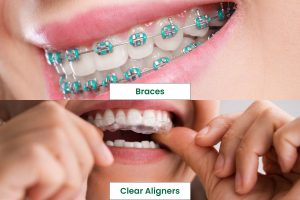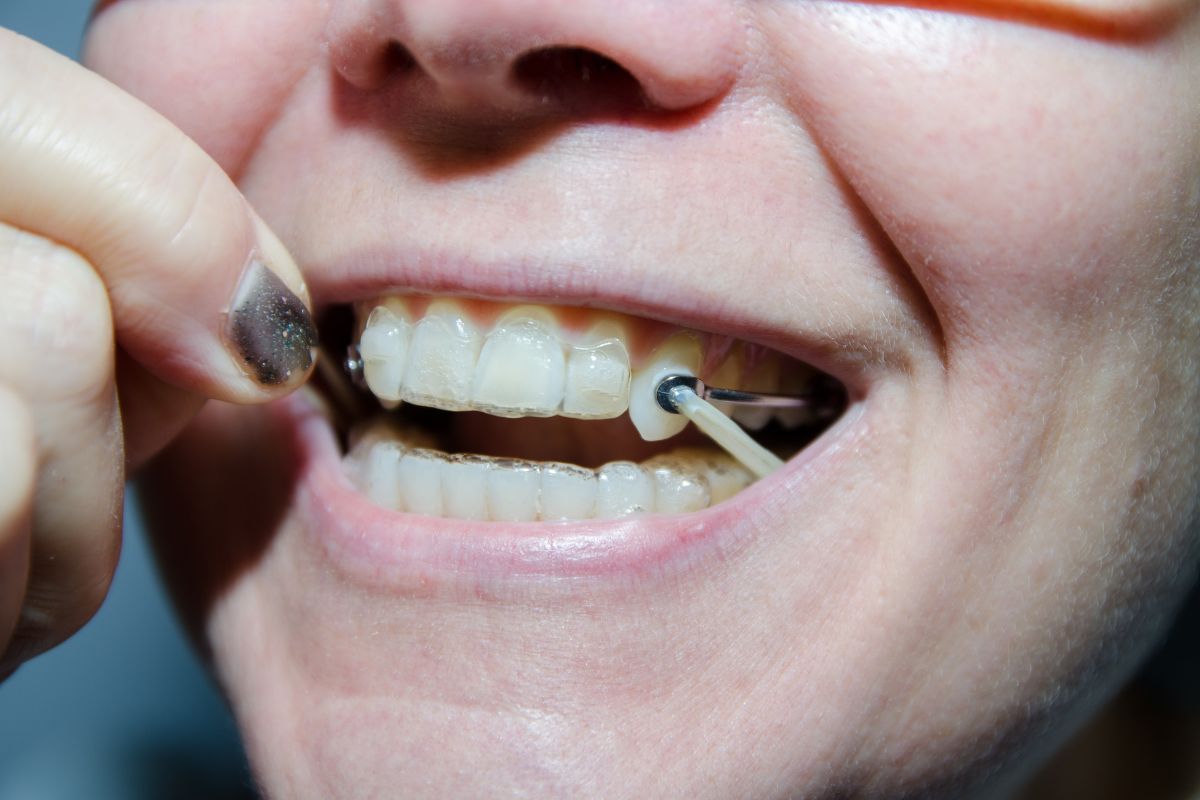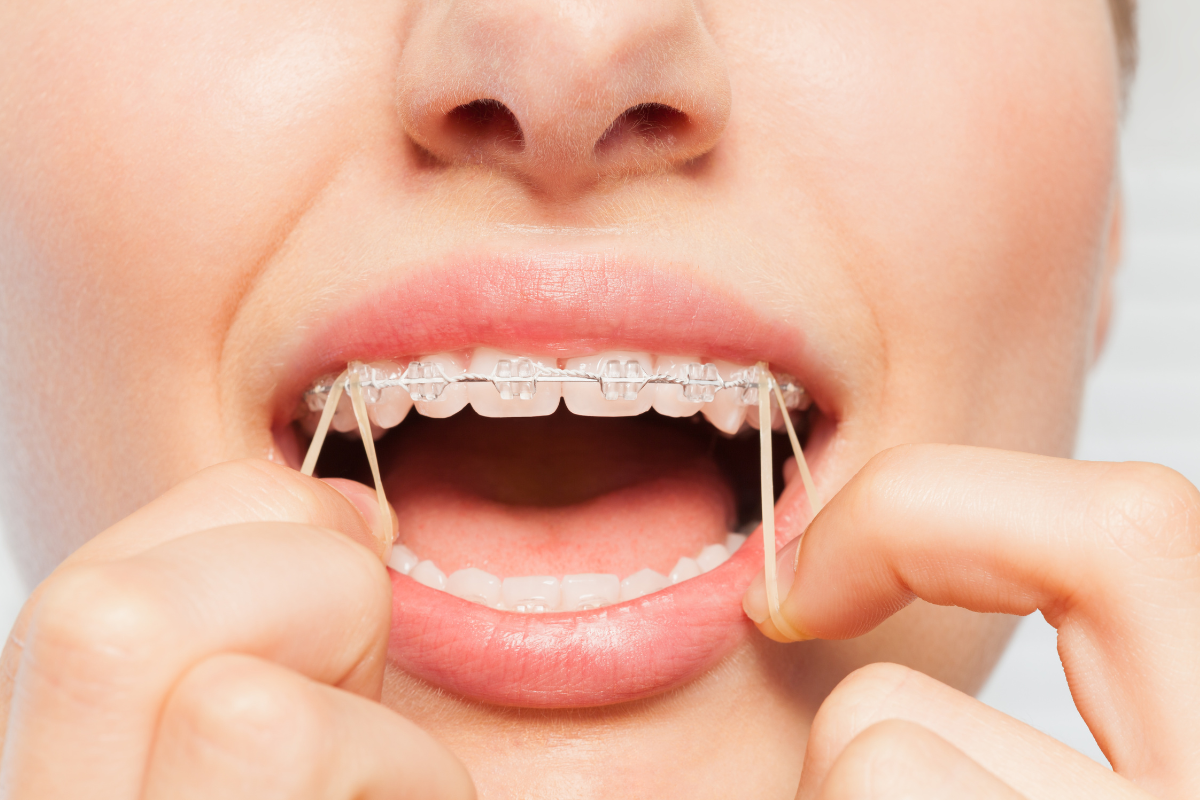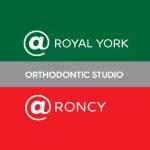

Are you considering orthodontic treatment to achieve a straighter and more confident smile? With advancements in dental technology, you now have multiple options. Two popular choices are clear aligners and traditional braces. Both methods can effectively align your teeth and improve your oral health. However, there are significant differences between the two that you should consider when deciding.
This article will explore clear aligners and braces’ characteristics, advantages, and drawbacks, helping you determine which option is right.
Introduction
Orthodontic treatment aims to correct misaligned teeth, improving both aesthetics and functionality. Clear aligners and braces are two different approaches to achieving this goal. Clear aligners are a modern alternative to traditional braces, providing a discreet and convenient orthodontic solution.
Clear Aligners: An Overview
Clear aligners are transparent, removable trays made of medical-grade plastic. They are custom-made to fit snugly over your teeth and gradually shift them into the desired position. These aligners are designed to be worn for 20 to 22 hours a day, and you change them every one to two weeks as your teeth progress through the treatment stages.
Advantages of Clear Aligners
- Aesthetics: Clear aligners are virtually invisible, making them an attractive option for those concerned about the appearance of traditional metal braces.
- Removability: Clear aligners can be easily removed for eating, drinking, brushing, and flossing, allowing for greater convenience and better oral hygiene than braces.
- Comfort: The smooth plastic material of clear aligners offers a more comfortable experience with reduced irritation to the mouth’s soft tissues.
- Convenience: With clear aligners, you have fewer visits to the orthodontist than braces, as you receive several aligner sets in advance.
Drawbacks of Clear Aligners
- Compliance: Clear aligners require discipline and commitment, as they must be worn for the recommended hours each day to achieve the desired results.
- Limited Suitability: Clear aligners may not be suitable for complex orthodontic cases or severe misalignments that require more precise control, where braces might be a better option.
Braces: An Overview
Braces consist of brackets, wires, and elastic bands that exert gentle pressure on the teeth, gradually moving them into the correct alignment. These components are fixed onto the teeth and are adjusted periodically by an orthodontist.
Advantages of Braces
- Versatility: Braces are highly versatile and can address many orthodontic issues, including complex cases requiring precise control over tooth movement.
- Predictability: The fixed nature of braces ensures constant pressure on the teeth, resulting in predictable and precise alignment.
- No Compliance Required: Unlike clear aligners, braces are fixed onto the teeth, eliminating the need for patient compliance in wearing them.
Drawbacks of Braces
- Aesthetics: Traditional braces are more noticeable than clear aligners, affecting the wearer’s confidence, particularly for adults.
- Oral Hygiene Challenges: The brackets and wires of braces can make oral hygiene more challenging, requiring extra effort to clean around the appliances.
- Diet Restrictions: Certain foods and habits, such as sticky candies or chewing gum, may be restricted during braces treatment to prevent damage to the braces.
Other Factors for Consideration
Appearance
Clear aligners are known for their discreet appearance, as they are virtually invisible when worn. On the other hand, braces consist of visible metal brackets and wires, which may be noticeable when you smile or speak. If you prioritize aesthetics and wish for a more inconspicuous option, clear aligners may be your better choice.
Comfort
Clear aligners offer a higher level of comfort compared to braces. The smooth plastic material of aligners minimizes the risk of mouth irritations and injuries often associated with braces’ brackets and wires. However, some patients may experience temporary discomfort or pressure when switching to a new aligner tray, but it typically subsides within a day or two. Braces may cause mild pain and soreness, especially after adjustments, but most patients adapt to it over time.
Treatment Duration
The duration of orthodontic treatment varies depending on individual cases. Clear aligners generally require a shorter treatment period compared to braces. On average, clear aligner treatment lasts 6 to 18 months, while braces treatment can range from 12 to 36 months. Your orthodontist will evaluate your specific needs and provide an estimate of the treatment duration.
Effectiveness
Both clear aligners and braces are highly effective in achieving desired orthodontic results. Clear aligners are suitable for mild to moderate orthodontic issues, including crowded teeth, gaps, and minor bite irregularities. However, braces may provide better control over tooth movement and deliver more precise results for more complex cases involving significant bite misalignments or severe crowding.
Maintenance
Clear aligners require proper maintenance to ensure optimal results. You must clean them regularly using a soft toothbrush and water to prevent plaque and bacteria buildup. Additionally, you should brush and floss your teeth before reinserting the aligners after meals. With braces, maintaining good oral hygiene becomes more challenging due to the presence of brackets and wires. Specialized orthodontic brushes and flossing techniques are necessary to clean the appliances effectively.
Dietary Restrictions
Clear aligners offer the advantage of no dietary restrictions since they can be easily removed during meals. You can continue to enjoy all your favorite foods without any concerns. On the other hand, braces require caution when eating certain foods that can damage the brackets or wires. Hard, sticky, or chewy foods should be avoided to prevent potential orthodontic emergencies.
Affordability
The cost of orthodontic treatment can vary depending on the case’s complexity, geographical location, and specific treatment provider. In general, clear aligners are slightly more expensive than braces. However, it is essential to consult with an orthodontist to receive accurate pricing information tailored to your individual needs.
Suitability for Complex Cases
While clear aligners have expanded their capabilities to address more complex cases, their effectiveness still has limitations. Braces offer better control over tooth movement and are often the preferred choice for complex orthodontic issues, including severe malocclusions or jaw discrepancies.
Oral Hygiene
Maintaining good oral hygiene during orthodontic treatment is crucial for preventing dental problems. Clear aligners allow for easy removal, enabling thorough brushing and flossing. In contrast, braces require extra effort to clean around the brackets and wires, and specialized oral hygiene tools may be recommended to ensure effective plaque removal.
Lifestyle Considerations
Your lifestyle and personal preferences play a significant role in choosing between clear aligners and braces. Clear aligners offer the advantage of removability, allowing you to enjoy your favorite activities, play musical instruments, or engage in contact sports without restrictions. Braces, being fixed appliances, require caution during certain activities to avoid damage.
Aftercare
After orthodontic treatment, clear aligners and braces may require retainers to maintain the achieved results. Retainers help prevent teeth from shifting back to their original positions. Your orthodontist will instruct you how often to wear retainers and how long.
Clear Aligners or Braces?
When deciding between clear aligners and braces, it is important to consider factors such as aesthetics, comfort, treatment duration, effectiveness, maintenance, dietary restrictions, affordability, suitability for complex cases, oral hygiene, and lifestyle considerations. Clear aligners offer a discreet and convenient option, while braces provide versatility and precise control over tooth movement. Consulting with an experienced orthodontist will help you make an informed decision based on your unique needs and preferences.
Smile with us
If you are looking for one of the best Orthodontic Treatment providers in Toronto, Ontario. Then Orthodontic Studio is the place that you are looking for!
“A positive self-image and self-confidence can result from proper orthodontic care.”
This belief has been our foundation for over 17 years of creating beautiful, straight, and confident smiles!
With thousands of finished cases under our belt, we are confident in our ability to provide you and your family with excellent treatment delivered with expertise and care.
Schedule a virtual or in-office appointment now! The first one is free of charge, and there are no strings are attached!
FAQs
Can clear aligners treat all types of orthodontic issues?
Clear aligners can address many orthodontic issues, including crowded teeth, gaps, and minor bite irregularities. However, severe cases may require braces or additional orthodontic interventions.
Are clear aligners painful to wear?
Clear aligners may cause temporary discomfort or pressure when switching to a new tray. However, it is usually mild and subsides within a day or two.
How often should I visit the orthodontist during clear aligner treatment?
The frequency of orthodontic visits during clear aligner treatment varies depending on your treatment plan. Typically, appointments are scheduled every 4 to 6 weeks to monitor progress and receive new sets of aligners.
Can I remove the braces by myself once the treatment is complete?
No, removing braces should be done by a dental professional. They have the necessary tools and expertise to safely remove the brackets and wires without causing any damage to your teeth.
Does insurance cover orthodontic treatment?
Orthodontic coverage varies among insurance plans. It is recommended to check with your insurance provider to understand the extent of coverage and any specific requirements or limitations.
Recent Posts
-
Inside the World of Orthodontists: Education, Precision, and Transformative Treatments
The Evolution of Orthodontics: A Brief Historical Overview Orthodontics, an integral branch…
-
How Orthodontists Plan a Treatment for a Beautiful Smile
Understanding the Patient's Unique Needs A positive self-image and confidence can result…
-
Unleash Your New Smile! Here's What You Need to Know Before Braces Removal
Are you excited to see your smile transformation? Taking your braces off…
-
Traits That a Good Orthodontist Should Have
Choosing an orthodontist is half your smile transformation journey. That’s why in…
-
How Braces Can Help Fix an Asymmetrical Jawline
An asymmetrical jawline can cause concern for many individuals, affecting their appearance…
-
Can Cavities Be Reversed?
Cavities are among the most common dental issues people of all ages…
-
What to Prepare During Your First Braces Appointment
Are you about to embark on your journey to a beautiful smile…
-
Taking Care of Baby Teeth: A Comprehensive Guide for Parents
Caring for our children's health is one of our most crucial responsibilities…
-
What are Brace Elastics?
If you or someone you know is undergoing orthodontic treatment with braces,…
-
Difference Between an Overjet and Overbite: A Comprehensive Guide
Two orthodontic terms that often confuse our patients are "overjet" and "overbite."…







 Instagram
Instagram
